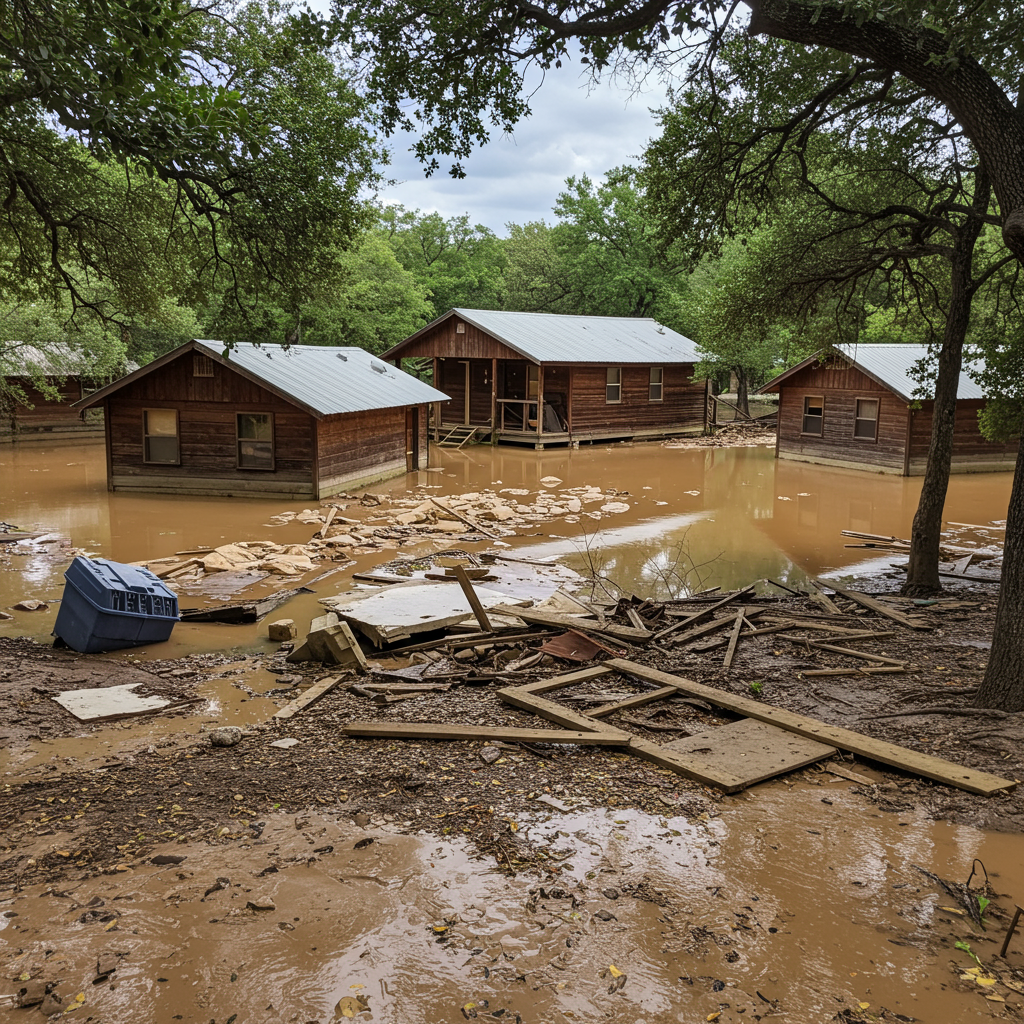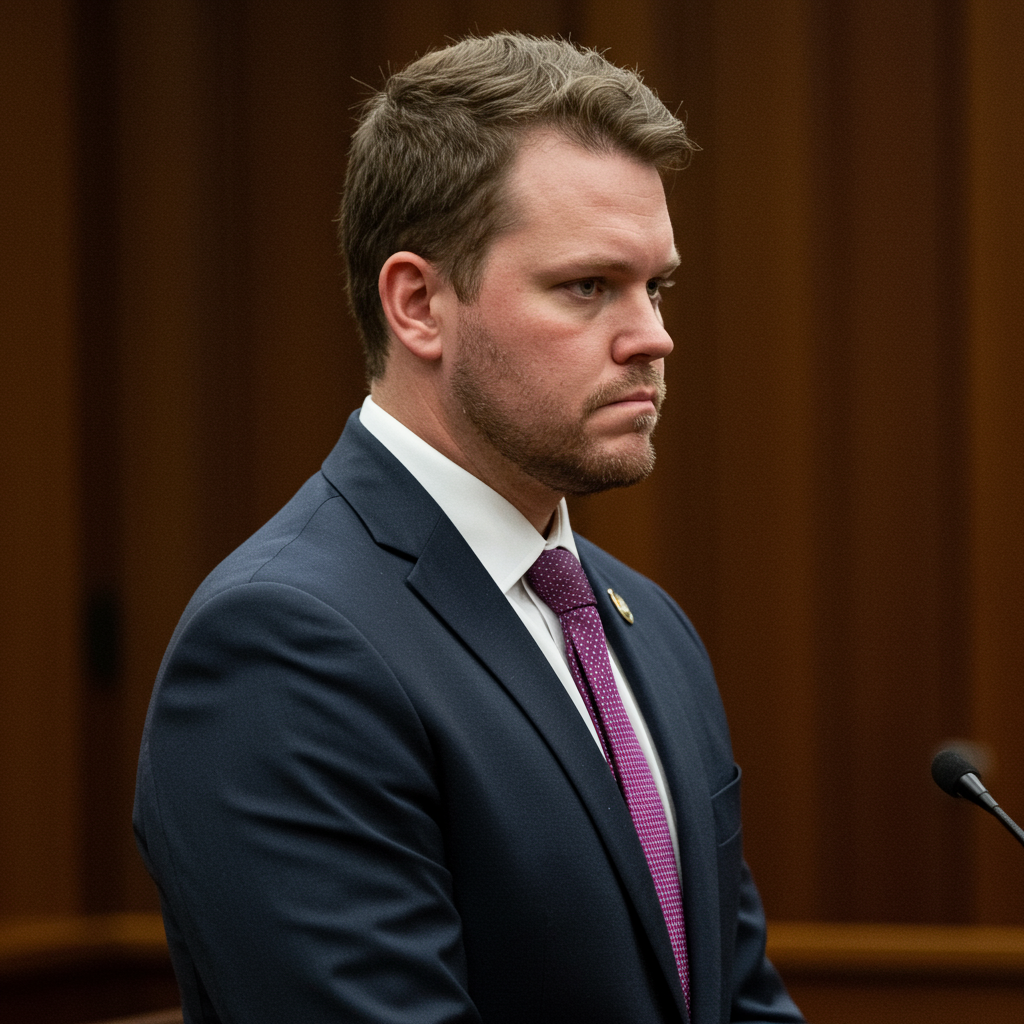A catastrophic flash flood struck the heart of the Texas Hill Country early on July 5, 2025. Devastating waters surged along the Guadalupe River near Hunt, Texas. This sudden deluge transformed Camp mystic, a cherished century-old girls’ summer camp, into a scene of profound tragedy. The event resulted in multiple fatalities and numerous missing persons, forever altering the lives of those connected to the camp and the surrounding communities. Search and rescue operations immediately commenced in the wake of the disaster.
Camp Mystic, founded in 1926, held a deep significance for generations of Texas families. It was a non-denominational Christian camp for girls who had completed second grade. Girls typically attended 30-day sessions, engaging in activities ranging from horseback riding and canoeing to arts, theater, and religious studies. Known as a place for girls to disconnect from technology and build self-confidence, the camp fostered lifelong friendships. Its location on the banks of the Guadalupe River had been a scenic hallmark, now tragically linked to its undoing.
The Torrential Event Unfolds
The flood hit with shocking speed and intensity. Following extremely heavy rainfall, the Guadalupe River experienced an unprecedented surge. Officials reported the river near Kerrville rose between 20 and 26 feet in a mere 45 to 90 minutes before dawn on Friday. This created a dangerous “flood wave,” a fast-moving wall of turbulent water capable of speeds up to 40 mph. The region, notoriously known as “Flash Flood Alley” due to its rapid runoff characteristics, was particularly vulnerable. While preparatory meetings occurred, the National Weather Service initially underestimated the potential rainfall, which reached 6 to 11 inches in some areas within hours.
At Camp Mystic, approximately 750 girls were present when the floodwaters struck. The rapid rise in the darkness made evacuation incredibly challenging for camp staff. Many buildings, some located within known flood hazard areas, were quickly inundated. Water levels reportedly rose to bunkbed height in some cabins at nearby camps, forcing campers to swim out. Communication became nearly impossible as the flood knocked out power, water, and Wi-Fi. The main highway leading to the camp was also washed away, severely hindering initial aid access.
Initial Impact and Search Efforts
Immediate reports from Camp Mystic indicated that dozens of girls were unaccounted for. Families of missing campers were contacted amidst the chaos. The initial focus was on finding survivors in the debris and fast-moving water. Search and rescue teams, comprising hundreds of personnel from various state and federal agencies, were rapidly deployed. They utilized helicopters, drones, high-water vehicles, and boats in the extensive search across the affected areas. The U.S. Coast Guard alone rescued or assisted hundreds of people in central Texas, including several campers from Camp Mystic via helicopter.
The tragedy extended far beyond the camp grounds. The flash flood devastated multiple counties in the Texas Hill Country. The statewide death toll quickly climbed, surpassing 50 individuals across five counties. Kerr County bore the brunt of the disaster, accounting for 43 fatalities, including 15 children. Identification of victims and missing persons proved difficult in the immediate aftermath. Reunification centers were established to help frantic families seeking information about loved ones.
Remembering Those Lost
The flood claimed the lives of individuals deeply connected to the community and the camps. Richard “Dick” eastland, the beloved director and part of the fourth generation of the Eastland family to run Camp Mystic, was confirmed among the deceased. His wife, Tweety Eastland, known for her baking classes, was also a central figure. Jane Ragsdale, the director of the nearby Camp Heart O’ The Hills, also perished in the flood. The list of confirmed fatalities included young campers and residents. Nine-year-old Lila Bonner and Janie Hunt from Dallas, both Camp Mystic attendees, were tragically lost. Sisters Brooke (11) and Blair Harber (13), staying nearby with their grandparents, were also confirmed dead.
Many people remained missing for days following the flood. The missing included 8-year-old Hadley Hanna from Dallas-Fort Worth, another camper from Camp Mystic, and Eloise Peck from Fort Worth. Adults unaccounted for included the Harber sisters’ grandparents, Charlene and Mike Harber, and a couple staying in an Airstream trailer, Jeff and Tanya Ramsey. Another couple visiting family, Joni and Robert Brake Sr., also went missing after their cabin was swept away. These personal stories underscored the immense scale of the human cost of the disaster.
The Legacy of Camp Mystic
For nearly a century, Camp Mystic had been more than just a summer destination. It was a foundational experience for countless Texas women. Former campers, many from multi-generational Camp Mystic families, described it as a cherished safe haven. They recalled its unique culture of unplugging from the outside world and finding strength and spirituality. Activities like fishing with “Dick” Eastland or baking with “Tweety” Eastland were iconic parts of the experience. The camp also had historical ties to Texas’s political landscape, hosting daughters of governors and presidents.
The destruction inflicted by the flood was devastating to the physical camp itself. Cars were piled up, cabins were damaged, and belongings were scattered by the force of the water. For alumnae, the news of the damage and the loss of Dick Eastland added profound layers to their grief. Group chats quickly mobilized as former campers sought information and solace, struggling to reconcile the beautiful, safe place they remembered with the scene of tragedy. They affirmed that while the physical location suffered, the spirit and memories of Camp Mystic would endure.
The Road to Recovery
In the aftermath, state and federal resources poured into the region. Texas Governor Greg Abbott declared a disaster, and President Trump pledged federal support. Rescue operations continued relentlessly, transitioning from search and rescue to search and recovery as hopes dimmed. The event also sparked discussions about flood warnings and preparedness in “Flash Flood Alley,” particularly given that Kerr County reportedly lacked a county-wide warning system. While the NWS union stated warnings were issued in advance, some officials felt they were insufficient given the rapid rise.
Climate scientists noted that such extreme rainfall events are becoming more likely due to a warming climate, potentially increasing the frequency and intensity of future floods. The damage to infrastructure, including roads and bridges, necessitated lengthy repairs. Communities grappled with the immense loss and the long process of clean-up and rebuilding. The tragedy served as a stark reminder of the power of nature and the vulnerability of communities located in flood-prone areas, leaving an indelible mark on the Texas Hill Country and the extended Camp Mystic family.
Frequently Asked Questions
How quickly did the floodwaters rise around Camp Mystic during the disaster?
Reports indicated an astonishingly rapid rise in the Guadalupe River near Camp Mystic. The river surged between 20 and 26 feet in a timeframe of just 45 to 90 minutes on the morning of July 5, 2025. This swift and dramatic increase in water level was a primary factor in the catastrophic impact of the flood on the camp and surrounding areas.
Who were some of the individuals affected by the Camp Mystic flood tragedy?
The flood resulted in significant loss of life and missing persons, including those connected to Camp Mystic. Victims included Camp Mystic director Richard “Dick” Eastland and young campers Janie Hunt and Lila Bonner. Others lost in the broader flood included sisters Brooke and Blair Harber, and Camp Heart O’ The Hills director Jane Ragsdale. Several individuals, including Camp Mystic camper Hadley Hanna and grandparents Charlene and Mike Harber, were initially reported missing.
How did the history of Camp Mystic impact those connected to it after the flood?
Camp Mystic held deep historical significance, serving generations of Texas women for nearly a century as a cherished summer retreat. This long legacy meant the tragedy profoundly impacted a vast network of alumnae and families. Former campers expressed deep grief and shock over the damage and loss of life, particularly the death of beloved director Dick Eastland. They mobilized to seek information and offer support, reflecting the strong community bonds forged by the camp experience.
The Camp Mystic flood tragedy of 2025 stands as a somber event in the history of the Texas Hill Country. It highlighted the intense power of flash floods and the deep connections people hold to places like summer camps. The extensive search efforts, the outpouring of support from alumnae and the wider community, and the ongoing process of recovery underscore the lasting impact of the disaster. While the physical landscape was scarred, the memories and spirit of Camp Mystic endure for the thousands whose lives it touched.




